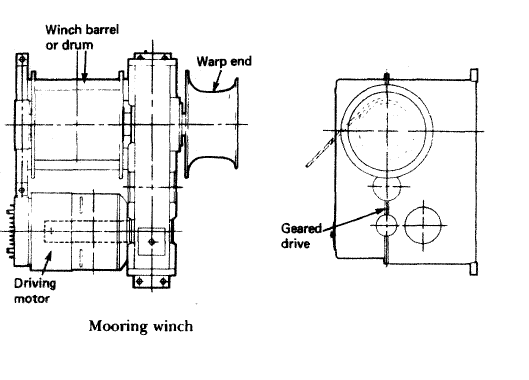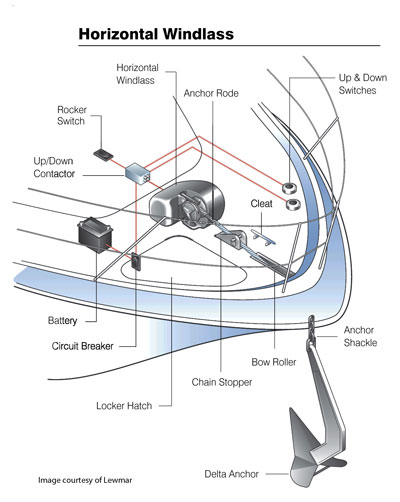Standard Fire Test on the Ship
Standard Fire Test:-
- A standard fire test is a test in which specimens of the relevant bulkhead or decks are exposed in a test furnace to temperatures corresponding approximately to the standard time-temperature curve in accordance with the test method specified in the FTP Code.
- The specimen must have an exposed surface of 2.44m width and 2.5m height. In case of decks and ceilings, they must be of 2.44mm width and 3.04m length. When the maximum overall height in practice is to be less than that given above, then the test specimen shall be of the maximum height to be used in practice.
- Orientation of the test piece shall be maintained. A bulkhead shall be tested vertically and a deck or ceiling shall be tested horizontally.
- Class A and B Class bulkheads and doors shall be tested from each side.
- A-Class un-insulated steel bulkheads and decks without openings shall be treated as A-0 and no test is required. All other divisions, including class “A-0” divisions with a structural core of aluminum, are required to be tested.
- Constructions shall be tested without paint or other superimposed finishes,subject to the approval of the Administration.
- The specimen being tested should resemble as closely as possible the intended construction and include atleast one joint, where applicable.
- Temperature thermocouples are placed at various points on the specimen to be tested as per FTP Code. During the test, temperatures are recorded at intervals not exceeding 1 minute.
- The average temperature of the furnace as derived from the furnace thermocouples shall be monitored and controlled such that it follows the standard time-temperature curve. (This is a smooth curve drawn using furnace temperature points measured at 5m, 10m, 15m, 30m and 60m starting from the initial furnace temperature.)
- The average temperature rise on the unexposed surface shall be calculated as the average of the rises recorded by the individual thermocouples to check if the specimen complies with the requirement on temperature rise.
- If there is any flaming seen on the unexposed side, the duration and the location shall be recorded. In cases where it is difficult to identify whether or not there are flames then the cotton-wool pad shall be applied to see if ignition of the pad can be initiated.
- For all “A” class divisions, including those with doors, the test shall continue for a minimum of 60 min. For all “B” class divisions, including those with doors, the test shall continue for a minimum of 30 min.
Limitations in the use of oils as fuel:
The following limitations shall apply to the use of oil as fuel:
- Except as otherwise permitted by this paragraph, no oil fuel with a flashpoint of less than 60°C shall be used.
- In emergency generators oil fuel with a flashpoint of not less than 43°C may be used.
- The use of oil fuel having a flashpoint of less than 60°C but not less than 43°C may be permitted (e.g., for “feeding the emergency fire pump” s engines and the auxiliary machines which are not located in the machinery spaces of category A) subject to the following:
- Fuel oil tanks except those arranged in double bottom compartments shall be located outside of machinery spaces of category A.
- Provisions for the measurement of oil temperature are provided on the suction pipe of the oil fuel pump.
- Stop valves and/or cocks are provided on the inlet side and outlet side of the oil fuel strainers.
- Pipe joints of welded construction or of circular cone type or spherical type union joint are applied as much as possible.
- In cargo ships the use of fuel having a lower flashpoint than otherwise specified, for example crude oil, may be permitted provided that such fuel is not stored in any machinery space and subject to the approval by the Administration of the complete installation.
Non Combustible material:
- It is the one which neither burns nor gives off flammable vapours in sufficient quantity for self-ignition when heated to approximately 7500C, as indicated in the FTP Code.
- A & B class divisions shall be constructed of non-combustible materials with the following exceptions:
- Adhesives and vapour barriers, but they should have low flame spread characteristics.
- Sealing materials used in penetration systems.
- Seal for gas/weather/water tight doors.
- Adhesives and vapour barriers, but they should have low flame spread characteristics.
Special category Spaces:
- Special category spaces are those enclosed vehicle spaces above and below the bulkhead deck, into and from which vehicles can be driven and to which passengers have access. Special category spaces may be accommodated on more than one deck provided that the total overall clear height for vehicles does not exceed 10 m.
- In passenger ships carrying more than 36 passengers, the bulkheads and decks of special category spaces shall be insulated to’A-60″ class standard.
- In passenger ships, indicators shall be provided on the navigation bridge to indicate when any fire door leading to or from the special category spaces is closed.
- In special category spaces to which any passengers carried can have access, the number and locations of the means of escape shall be to the satisfaction of the Administration. Walkways to the means of escape must be provided with a breadth of at least 600 mm. The parking arrangements for vehicles shall maintain the walkways clear at all times.
- The ventilation system for special category spaces must be sufficient to provide 10 air changes per hour.
- An efficient fire patrol system shall be maintained in special category spaces. If an efficient fire patrol system is maintained by a continuous fire watch at all times during the voyage, a fixed fire detection and fire alarm system is not required.
- Special category spaces shall be fitted with a fixed water-based fire-fighting system with provision of manual operation, which shall protect all parts of any deck and vehicle platform of such spaces. A sufficient number of drainage valves must be provided to ensure complete drainage of the system. Also, means shall be provided to prevent the blockage of drainage arrangements.
- There are additional requirements for special category spaces of Ro-Ro Passenger ships. For example, CCTV surveillance and a water leakage detection system is required to be fitted to provide an indication to the navigation bridge and to ECR of any leakage through the bow or stern doors which could lead to flooding of special category spaces or ro-ro spaces.



